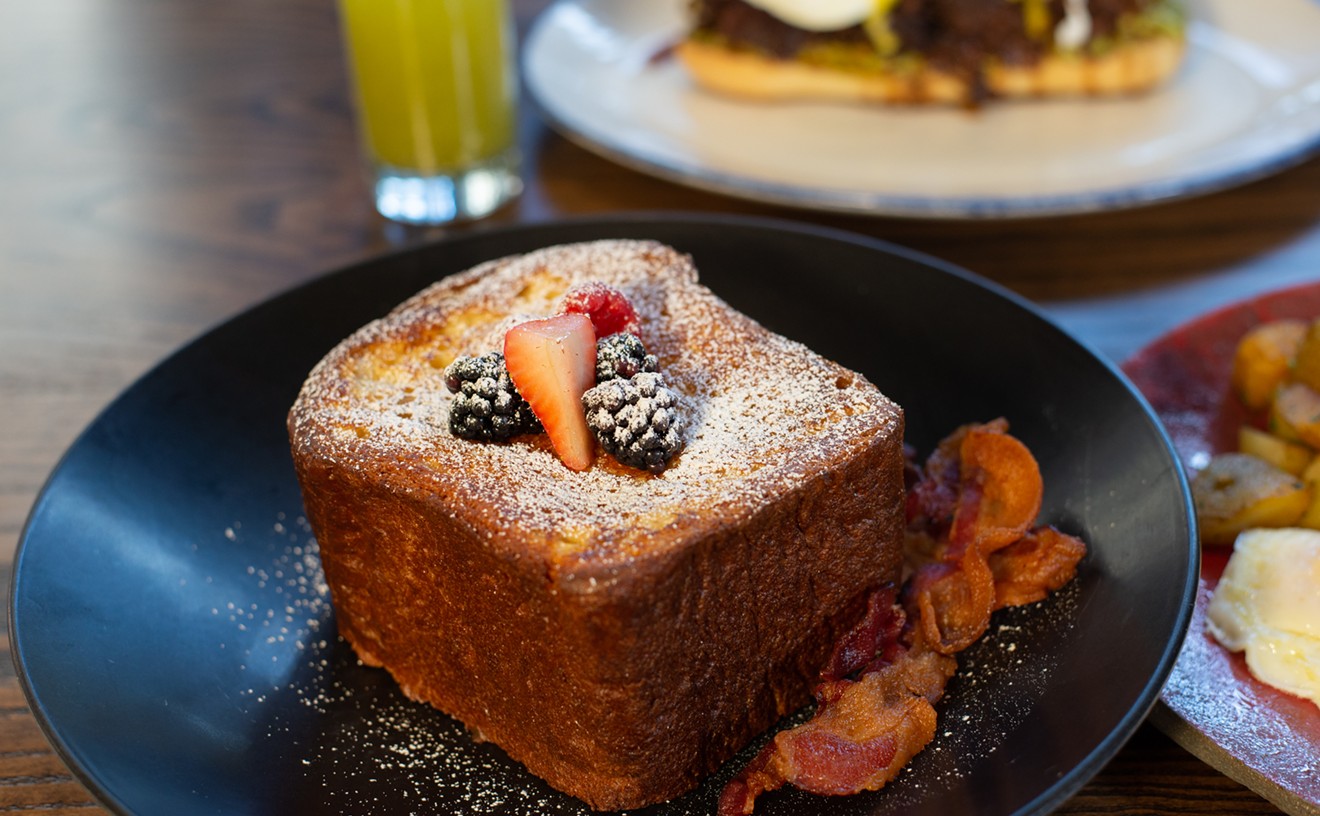And yeah, we know those are just myths. No scientific evidence exists tying shellfish consumption to increased libido. Perhaps the story earned credibility because, unlike a big hunk of red meat, an oyster serving or two doesn't weigh you down. Most aphrodisiacs, from saffron to green M&M's, come in small doses for that reason.
The r month tale carries vestiges of credibility from the days before refrigeration. Live oysters will keep for several days if stored at the freezing mark or slightly above, so no season is off-limits nowadays. Another source for the r month deal is that oysters pulled from warm waters, such as the Gulf of Mexico, are particularly susceptible to a death-dealing bacterium that, when ingested by humans suffering from liver problems or other specific ailments, wreaks havoc on the intestinal tract--sorta like a visit to Arby's, but more extreme. Mishandling the things, or rinsing them with fresh water, kills the oysters rather than the bacteria, making matters worse.
Let's face it, oysters are singularly disgusting creatures. They feed by sieving microscopic organisms from seawater, which means they trap the remnants of anything we dump into the ocean, from raw sewage to decomposing mob informants.
Oceanaire at the Westin Galleria sells more than 300 of the slimy critters every single day and stocks varieties from both the Atlantic Coast and Pacific Northwest. McCormick & Schmick's also offers a side bar with oysters from several regions. Chalkboards at both establishments list Wellfleet, Dabob, Malpeque, Kumamoto and other obscure selections. Considering, however, that more prosaic restaurants show very little concern for provenance, we must ask: Do named oysters really taste different?
"Some are very metallic in the finish, some are very salty, some are so clean it's like a cucumber or melon," says Brian Dietz, chef at Oceanaire. "Admittedly, to someone who's never had oysters before, side by side is where they'd tell the difference."
So in order to answer this week's question, we decided to test Dietz's theory and sample the bivalves, along with plenty of palate-cleansing martinis to ensure a proper evaluation of flavors. The tastings occurred over two consecutive days, and we tried every different oyster on the menu at both Oceanaire and McCormick & Schmick's, as well as several items from someone's refrigerator after our ninth palate-cleanser on the second evening.
The flavors indeed vary. Evening Cove, a West Coast example, provides a hint of smoke. Island Creek, from the waters off Massachusetts, smacks faintly of garlic. Penn Cove oysters, grown in Washington, are briny. From farther up the coast, Vancouver's Sinku provides a quite mild and one-dimensional experience.
"Diet is the number-one difference," Dietz explains. "They all feed the same way, but the water is different, and the plant matter is different."
Thus the ubiquitous Atlantic oyster, which thrives from Canada to the Gulf of Mexico, may appear as the Cotuit or Chincoteague or Island Creek or a dozen other names--each with a distinct taste. Because oysters never move once they've achieved a hold on some object--unless that object happens to move, of course--slight disparities in water quality or plankton in even the same bay will lend unique flavors and textures. In general, Atlantic varieties are briny and somewhat complex, with following notes ranging from citrus to metal. Pacific oysters often tend toward the smoky (or even grassy) with a heavier mineral flavor. The European flat oysters have been compared to gooey chunks of copper, while Kumamotos, once native to Japan, are creamy with a complex zing.
"Kumamotos are our most popular," says John Baker, executive chef at McCormick & Schmick's.
He acknowledges that many diners order without much knowledge of oyster provenance. "It's a slow process," he says, "but once people get educated, they become more conscious of where an oyster is from."
Both chefs suggest a mignonette sauce to accompany quality oysters. It consists of shallots, vinegar, pepper and other ingredients designed to complement the taste without overwhelming. "Cocktail sauce was created to mask the flavor of an oyster," Baker complains.
Of course, during our stops at Flying Fish and S&D Oyster Company, we doused the shellfish with horseradish, Tabasco and anything else that would enhance our level of beer consumption and drown out the minimal characteristics of those risky Gulf Coast things--although we did love the fried versions served at both establishments. Heat destroys the Vibrio vulnificus bacteria, says Dr. Sally Soileau, a nutrition expert with Louisiana State University's AgCenter, even in the non-r summer months.
When we mentioned our concern to Dietz, however, he just scoffed. "There's more bacteria in warmer-water oysters," he says, "but it's not a common danger."
Anyway, high-end restaurants typically rely on credible purveyors. In fact, we distracted the Oceanaire's staff on our visit, and a couple of us slipped into their kitchen to check this out. Oysters purchased by an establishment should arrive with a tag showing, among other details, the date of harvest. The feds require restaurants to keep all tags for three months, just in case customers keel over. Or get really, really frisky. Dietz holds onto his tags for six months, and every container had a tag. Of course, neither Dietz nor Baker sells Gulf Coast oysters, preferring to avoid even the slightest risk.
So, in answer to this week's question: There's little danger, no pearls, no ammunition for your love bazooka (sorry)--but yes, they do taste different.
"That's about it on oysters," Baker concludes. "They're just good."










